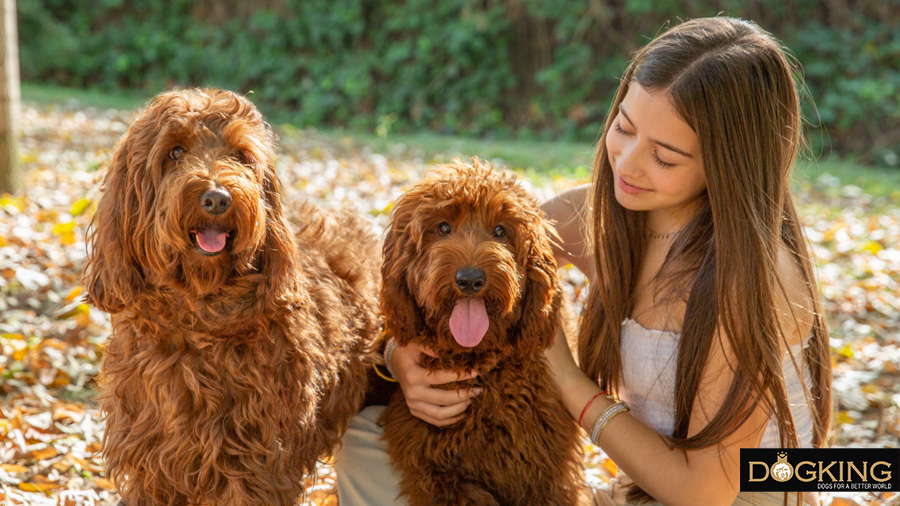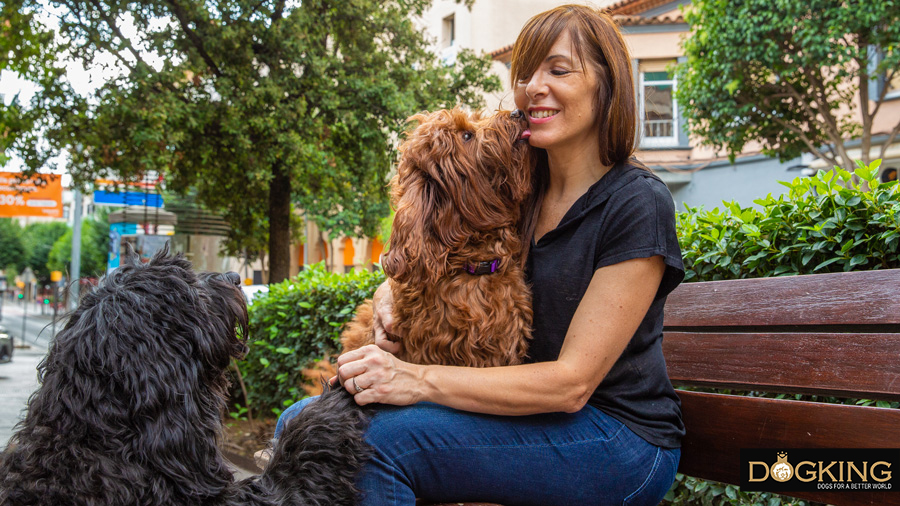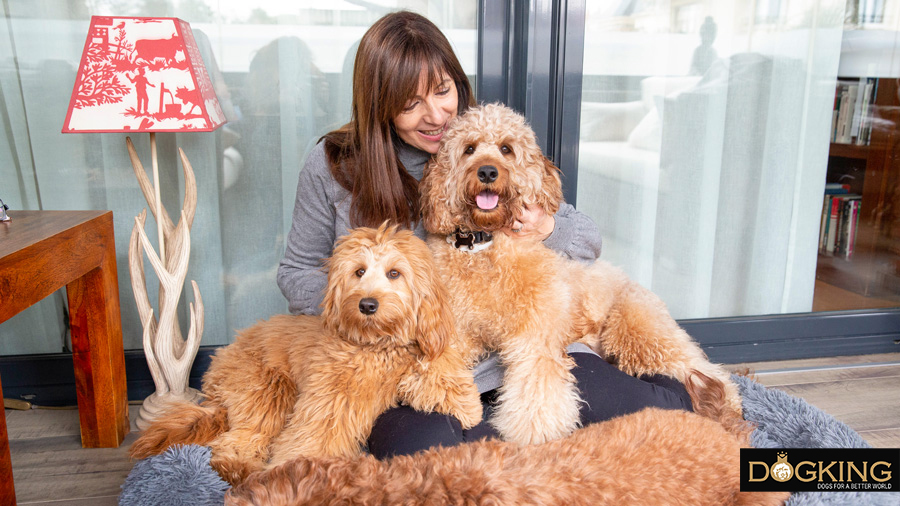Les chiens peuvent-ils être jaloux ?
Découvrez si votre chien est capable de se montrer jaloux et pourquoi

LA RAISON ET LA PRÉVENTION DE LEUR JALOUSIE
Temps de lecture approximatif : 10 minutes
Les chiens et les humains partagent beaucoup plus de sentiments que nous ne le pensons, et la jalousie n'est pas une exception. Mais pour éviter que cela ne se transforme en un comportement problématique, il est important de connaître les différents types de jalousie que nous pouvons rencontrer, comment elles peuvent se manifester, et comment nous pouvons les éviter ou, en dernier recours, les traiter.

Table de matières
1- La jalousie chez le chien et sa typologie
2- Qu'en pensent les experts ?
3- Qu'en pensent les experts ?
4- Raisons et conseils pour éviter que le chien ne devienne jaloux
La jalousie chez le chien et sa typologie
Les chiens ont leur propre conception de ce qui constitue leur meute. Pour notre chien, son cercle social est composé de tous ceux qui vivent avec lui. Mais au moment où une autre personne ou un autre animal fait de nouveau partie du groupe, le niveau hiérarchique et le rôle que notre animal adopte peuvent être menacés. Cette menace est ce qui éveille en lui la jalousie pour l’attention, qui se manifeste souvent plus fréquemment et doit être distinguée de la jalousie sexuelle.
Les jalousies sexuelles surgissent de manière instinctive lorsqu'un mâle, en raison du sentiment possessif qu'il ressent envers une femelle, voit qu'un autre mâle peut imposer sa génétique. Contrairement aux jalousies liées à l'attention, les jalousies sexuelles ne découlent pas de la socialisation, mais résultent de l'instinct reproductif de tout chien. Ce type de jalousie peut également entraîner une réponse agressive et affecter la coexistence ou les relations que notre chien peut établir, raison pour laquelle il est parfois recommandé de castrer les mâles ou de stériliser les femelles.
¿Qu'en pensent les experts ?
La question de la jalousie chez les chiens est quelque chose que plusieurs scientifiques ont essayé de déchiffrer au fil de l'histoire. Alors que certains, comme Darwin, pensaient qu'il s'agissait d'une expression acquise naturellement pour protéger le lien entre les individus, d'autres experts soutiennent que ce sentiment est une conséquence du processus de socialisation et culturel de tout être émotionnel. Un dilemme sur lequel, grâce à la psychologue Christine Harris et à sa direction d'une étude à l'Université de Californie (San Diego), nous pouvons avoir un indice.
L'étude de Harris a vérifié qu'en effet, les chiens sont une espèce qui ressent également la jalousie. La recherche a impliqué la participation de 38 chiens de différentes races, présentant différents scénarios où les chiens étaient ignorés par leurs propriétaires au profit de trois objets : un chien en peluche, une lampe de poche ou un livre. Ainsi, les personnes traitaient ces objets de la même manière qu'elles traitaient généralement leurs animaux de compagnie, que ce soit par des caresses ou un langage affectueux.
Les résultats étaient éloquents, montrant que 78 % des sujets avaient des signes de jalousie lorsqu'ils étaient remplacés par un peluche, 42 % avaient un comportement similaire dans le cas de la lampe de poche, et 25 % avec le livre. En fait, l'une des manifestations de la jalousie chez les chiens était d'essayer d'attirer l'attention de leurs propriétaires, tentant de rompre le lien ou l'interaction établie avec l'objet en question. En définitive, on a pu observer que la grande majorité des chiens ont tendance à montrer leur jalousie par un comportement agressif, à travers des aboiements ou des grognements. Agressif de l'extérieur, mais défensif du point de vue de l'animal, qui revendique le rôle qu'il avait jusqu'alors intériorisé et cru devoir adopter.

Les signes de jalousie de votre chien
Voici les comportements les plus courants qui peuvent trahir la jalousie de votre chien, surtout s'ils ne se produisent pas habituellement chez lui :
-
Mictions à l'intérieur de la maison : pour attirer l'attention et renforcer son marquage territorial.
-
Comportement possessif : vouloir accompagner en permanence le sujet dont l’attention est demandée, que ce soit une personne ou un animal, en réclamant fréquemment des démonstrations d'affection.
-
Mauvais comportement : étant donné que le principal motif est le manque d’attention, certains chiens peuvent en arriver à détruire des objets, pleurer, refuser de manger ou demander trop de nourriture, ne pas répondre aux ordres ou se cacher pour inciter à ce qu'on vienne les chercher.
-
Aggressivité : chez certaines races, ils peuvent montrer de l'agressivité en grognant ou en montrant les dents, et même en mordant ou en attaquant celui qu'ils considèrent comme un rival. L'agressivité peut se manifester de différentes manières et sera une raison suffisante pour consulter un professionnel.
Déclencheurs de la jalousie chez le chien
La situation la plus courante qui tend à éveiller des sentiments de jalousie chez les chiens survient lorsqu'on accorde plus d'attention à un chien qu'à un autre. Dans le cas d'un chien nouvellement arrivé dans le même foyer, il s'agit de territorialité plutôt que de jalousie, car tant que le nouvel occupant ne sera pas perçu comme un membre de la famille, il sera probablement considéré comme un "intrus" plutôt que comme un "rival".
Un autre déclencheur pourrait être une attention réduite accordée à un chien pendant la grossesse d'une femme, la cohabitation avec un enfant ou un bébé dans une famille, ou encore des jalousies envers le partenaire du propriétaire lorsque le chien perçoit des gestes d'affection entre eux.
Raisons et conseils pour éviter que le chien ne devienne jaloux
La jalousie, tout comme chez d'autres espèces, peut entraîner un changement dans le comportement habituel de votre chien. Cela nécessite une attention particulière si le sujet est un bébé ou un enfant, il est donc important de préparer votre petit chien avant la naissance en l'habituant aux nouvelles routines et aux nouvelles odeurs.
Dans le cas où vous constateriez des changements brusques de comportement, la meilleure chose à faire est de confier cette situation à un professionnel, qu'il s'agisse d'un éthologue à qui demander conseil ou d'un dresseur qui pourra rééduquer votre animal. Pour éviter d'en arriver là, il est préférable, lors du processus de socialisation, de contrôler les jalousies et de normaliser les manifestations de contact entre le propriétaire et d'autres personnes ou animaux. Bien que le processus d'apprentissage soit plus facile chez des races comme l'Australian Cobberdog. En effet, étant des chiens avec lesquels il est si facile de travailler l'empathie et la compréhension envers les autres, leur désir de plaire aux gens fait que la cohabitation, que ce soit avec d'autres chiens ou des membres de la famille, ne soit pas une source de jalousie mais de soutien.
